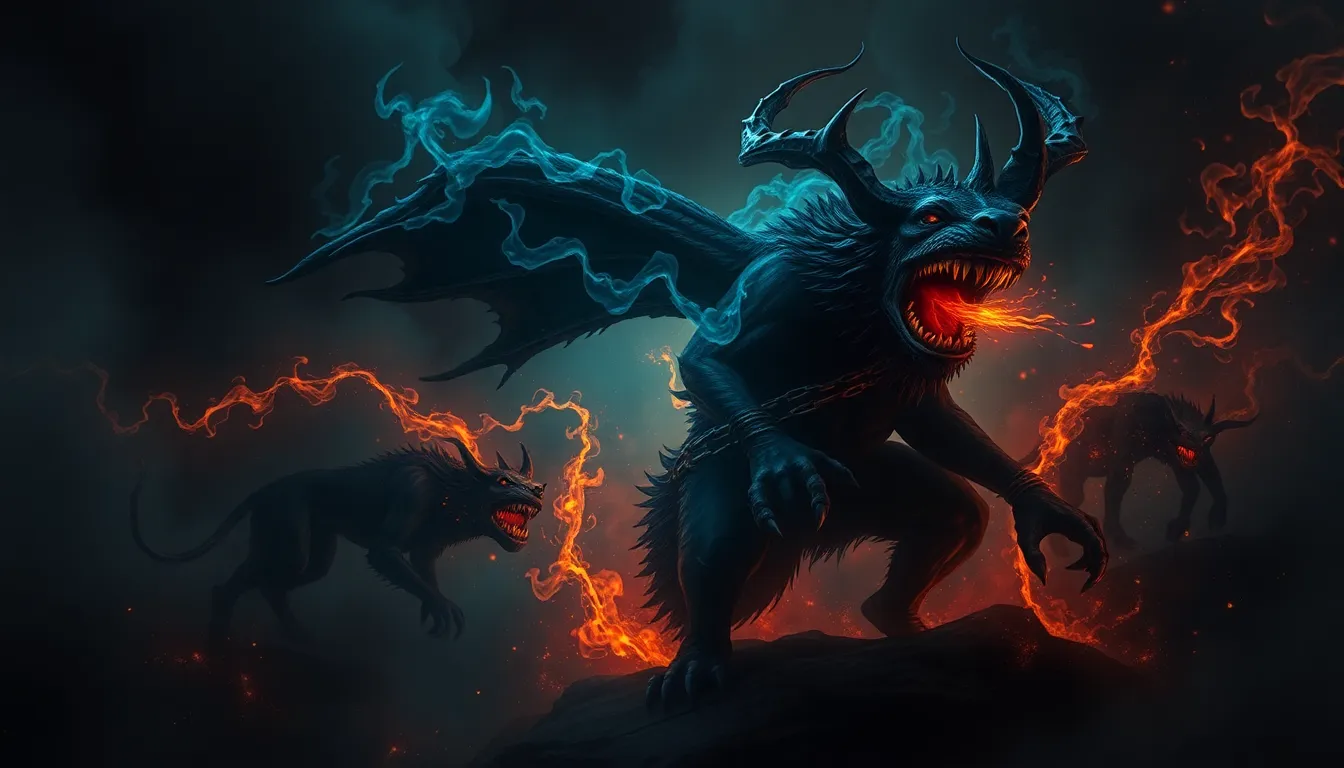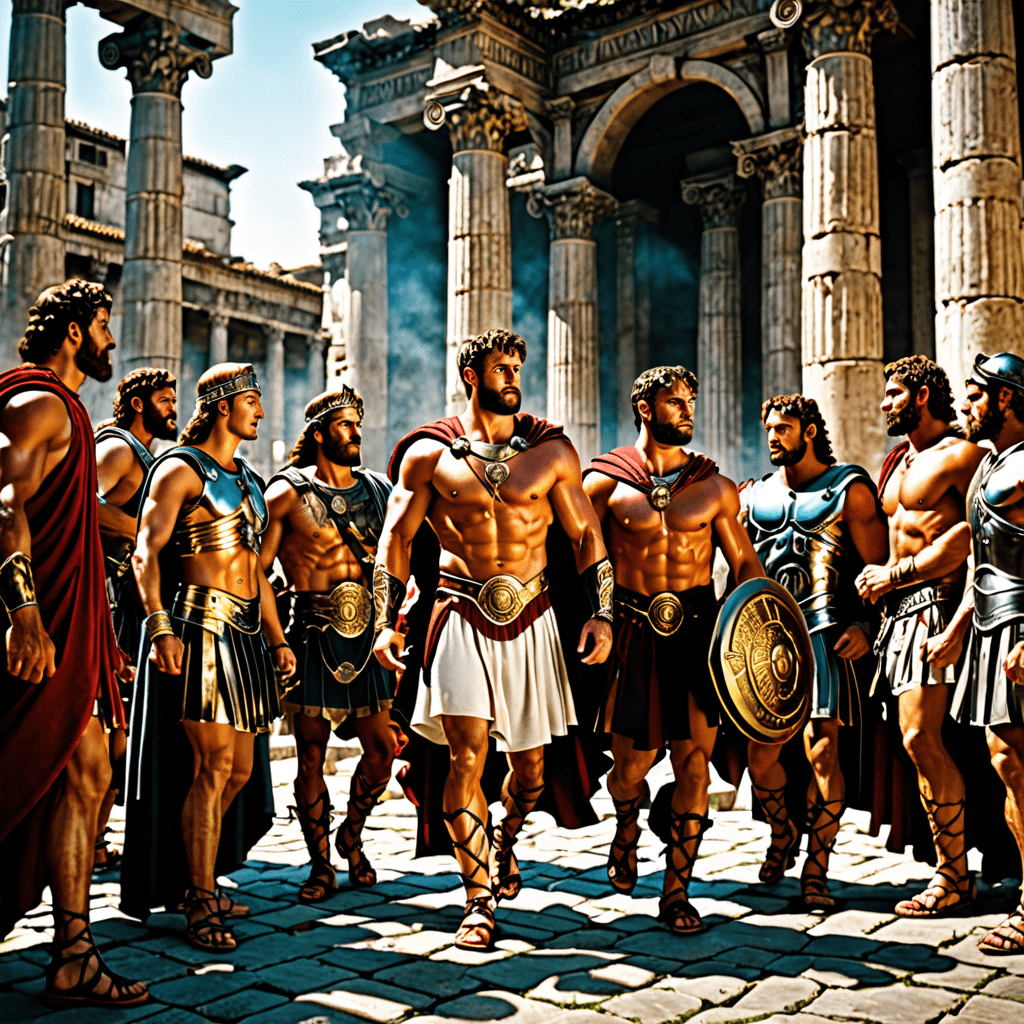Underworld Myths: The Dark Tales That Captivate the Imagination
Introduction to Underworld Myths
Underworld myths are narratives that delve into the realms of death, the afterlife, and the beings that inhabit these shadowy territories. Across cultures, these myths serve as profound reflections of humanity’s fears, beliefs, and moral values, offering insights into the unknown that lies beyond life. In this article, we will explore the allure of underworld myths, their significance within different cultures, and the themes that resonate through these dark tales.
The Concept of the Underworld Across Cultures
The underworld has been a persistent theme in mythology throughout history, with civilizations such as the Greeks, Romans, Egyptians, and Mesopotamians each presenting unique interpretations of this mysterious realm.
- Greek Mythology: The Greek underworld, ruled by Hades, is a complex realm where souls are judged and assigned to various fates, like Elysium or Tartarus.
- Roman Mythology: The Romans adopted Greek concepts but emphasized the afterlife’s moral dimensions, with figures like Pluto overseeing the souls.
- Egyptian Mythology: The Egyptian underworld, or Duat, is a journey through perilous trials, ultimately leading to judgment by Osiris.
- Mesopotamian Mythology: The underworld of Mesopotamia is a grim abode, ruled by Ereshkigal, highlighting fears of death and the afterlife.
These diverse beliefs shape cultural identities, influencing moral values and societal norms. The underworld is often depicted as a place of reflection, where characters confront their life choices and the consequences of their actions.
Key Figures of the Underworld Myths
Many deities and figures are pivotal to underworld myths, each embodying unique characteristics that reflect human fears and aspirations.
- Hades: The Greek god of the underworld, often misunderstood as a malevolent figure, represents the inevitability of death.
- Osiris: The Egyptian god of the afterlife, embodying resurrection and hope, he plays a crucial role in the cycle of life and death.
- Yama: In Hindu mythology, Yama is the god of death who guides souls to the afterlife, symbolizing the acceptance of mortality.
These figures not only govern the realms of the dead but also serve as mirrors reflecting human nature, fears, and the quest for meaning beyond existence.
Themes of Death and the Afterlife
Underworld myths frequently grapple with the concept of death and the mysteries of the afterlife. Different cultures interpret these themes in varied ways, leading to rich narratives filled with moral implications.
- Judgment: Many myths emphasize the idea of judgment, where souls are evaluated based on their earthly lives, as seen in Egyptian and Greek narratives.
- Transformation: Death is often portrayed as a transformative experience, leading to rebirth or enlightenment.
- Fear of the Unknown: The underworld embodies humanity’s fear of what lies beyond, prompting reflections on mortality.
These themes are crucial in conveying moral lessons and shaping cultural attitudes toward life and death.
The Journey to the Underworld
Mythological journeys to the underworld are prevalent, symbolizing the human experiences of loss, grief, and the quest for understanding. Notable tales include:
- Orpheus: In Greek mythology, Orpheus’s descent to the underworld to retrieve his beloved Eurydice highlights love’s power and the inevitability of loss.
- Gilgamesh: The epic of Gilgamesh explores the hero’s quest for immortality, ultimately leading him to confront the realities of death.
These journeys are laden with symbolism, representing the struggles individuals face in coming to terms with their own mortality and the emotional pain of separation.
The Underworld as a Reflection of Human Nature
Underworld myths are deeply intertwined with the darker aspects of humanity, revealing societal fears and desires. They often serve as cautionary tales, reflecting the complexities of human nature.
- Fear of Death: Many myths explore the fear of death and the unknown, urging characters to confront their mortality.
- Desire for Immortality: The longing for eternal life is a recurring theme, as seen in stories like that of Gilgamesh.
- Moral Lessons: Characters often face trials that highlight virtues such as courage, loyalty, and the consequences of hubris.
These narratives not only entertain but also provoke thought about the human condition and our existential fears.
The Role of Redemption and Transformation
Many underworld myths depict redemption as characters face challenges within these shadowy realms. Notable examples include:
- Persephone: Her story involves themes of seasonal change and the cyclical nature of life, highlighting transformation through adversity.
- Orpheus: Orpheus’s journey can be seen as a quest for redemption, where his love challenges the boundaries between life and death.
These tales emphasize that facing one’s fears can lead to personal growth and transformation, providing hope amidst the darkness.
Modern Adaptations and Influences
The influence of underworld myths persists in modern literature, films, and art, showcasing their timeless relevance. Contemporary works often reinterpret these ancient tales, infusing them with current themes.
- Films: Movies like “Hercules” and “What Dreams May Come” draw heavily from mythological concepts of the afterlife.
- Literature: Novels such as “The Lovely Bones” explore the afterlife through a modern lens, echoing ancient themes of loss and hope.
- Visual Arts: Artists continue to depict underworld themes, exploring the intersection of life and death in their works.
These adaptations not only pay homage to ancient myths but also resonate with contemporary audiences, highlighting the enduring fascination with the underworld.
The Enduring Fascination with Underworld Myths
The captivating nature of underworld myths continues to enthrall audiences, driven by our intrinsic curiosity about death and the afterlife. Factors contributing to this fascination include:
- Human Curiosity: The mystery of death and what follows compels us to explore these narratives.
- Storytelling Techniques: Modern media employs powerful storytelling methods that bring these ancient tales to life, making them accessible and relatable.
The revival of interest in these myths often reflects societal concerns about mortality and the human experience, keeping the stories alive in popular culture.
Conclusion: The Legacy of Underworld Myths
Underworld myths offer profound insights into the human condition, exploring themes of death, redemption, and transformation. They reflect our deepest fears and aspirations, serving as mirrors to our moral values and cultural identities. Understanding these myths enriches our appreciation of cultural heritage and the timeless narratives that continue to shape our collective imagination.




